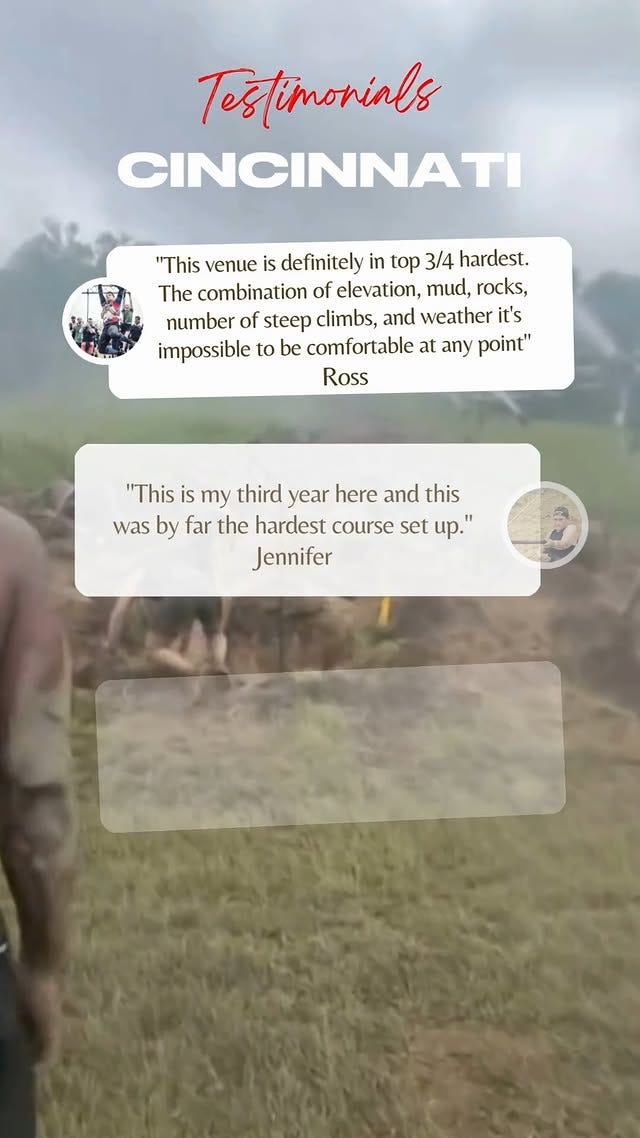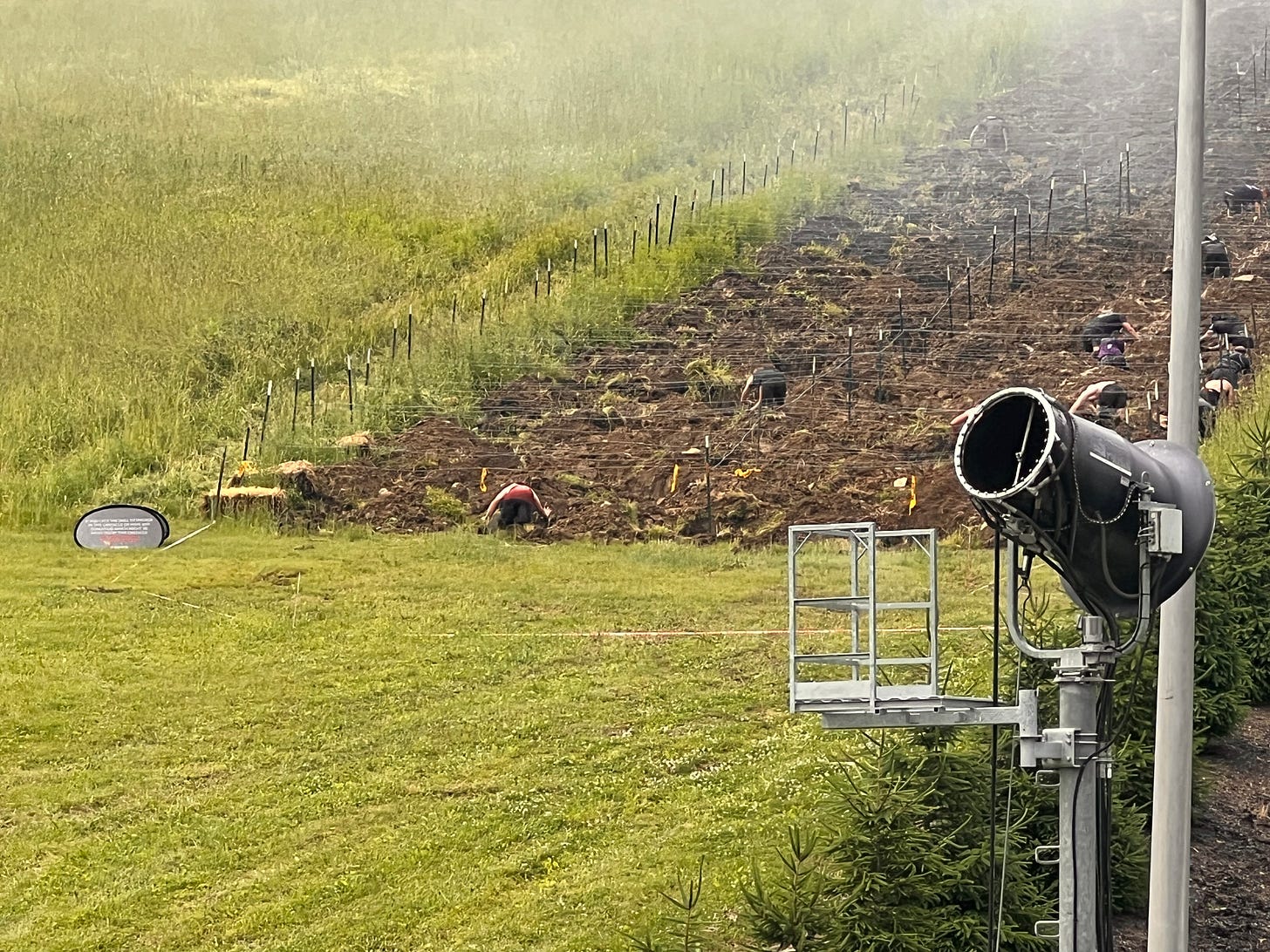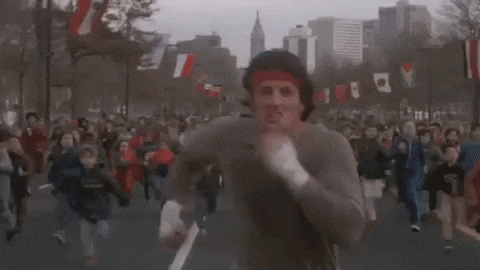Hey everyone and welcome to another running article!
First of all, if you are new, welcome! Make sure you are subscribed and you can get these letters straight in your inbox!
Alright, the moment that this mini series has been building up to:
The Cincinnati Spartan Beast 2025 race!
It was a wild experience! I almost don’t know where to start. But I suppose like any good story, we’ll start at the beginning.
Let’s jump in!
Carb Load
As with any good race preparation, I started this race with a 3 day carb load. This is the first time I’ve done this for a Spartan race.
Last year when I did the Spartan Super, I don’t think I did much of a purposeful carb load. I didn’t take it quite seriously enough from a nutrition point of view.
In fact, leading up to this race I didn’t think I would either. In my head, a Spartan race is more of a start and stop kind of race, my heart rate can go up and down, and the distance is only a half marathon. I don’t normally do a big carb load for a half marathon so maybe a carb load isn’t necessary for a Spartan race.
I don’t know why I thought those things.
But I did.
However, a week prior to the race, I realized that even though the distance of this race is only a half marathon, the time it would take me was closer to a full marathon’s time.
And thus, I figured I’d use a lot of carbs and a good 3 day carb load would go great!
If you’ve been following along in my journey, you know I don’t eat a ton of normal carbs like rice and bread. I don’t think they sit as well with me compared to other things like potatoes, plantains, and other fruits and honey.
However, getting 700g of carbs from fruit and honey is very difficult.
So I decided to experiment and for this carb load I’d go crazy on bread. Specifically bagels. I think I had 3-4 bagels a day with cream cheese and maybe even some honey. That probably got me a good 300g of carbs, so the remaining 400g was pretty easy with my normal daily diet.
To be honest, I loved it. Bagels are wonderful so I never got tired of them during the carb load. And I think it was a huge success! But we’ll get to that in a minute!
Travel
Traveling to the race was a bit tight because I didn’t really want to take extra days off work or board the dogs longer than need be.
As such, the race was on a Saturday and we drove to Cincinnati on Friday afternoon. Luckily, Spartan races don’t really have packet pickups like a marathon, you just show up for the race morning.
We got to stay with Taylor’s aunt and got in just in time to get dinner with her and her boyfriend, so that was a lot of fun!
It gave us a lot of nostalgic memories from our road trip back in 2021. In fact, the first leg of our road trip was to Taylor’s aunt in Cincinnati. And the last leg of our road trip was Lexington, KY back to NC. And after the race, we just so happened to stay the night in Lexington, KY, haha!
We even went to the same donut shop we went to in 2021. In our memories they were the best donuts on the planet. This time around they were so-so. I’m not sure what happened.
Anyways! We got to Cincinnati, ate some pasta, and went to bed early for that 4:30am alarm.
Just a tip to anyone thinking of doing a Spartan race. I suggest signing up for the competitive heat. You have to wake up early, but 1 early wakup isn’t bad at all.
The real benefit is that typically Spartan says you should show up 90 minutes before your race. But that’s more of a rule for the open heat when the line to get in is like 100 people deep. During the competitive heat there is practically no line. I think there was 1 person in front of me when we showed up like 45 minutes before my race. It gave me plenty of time to warmup and get pumped.
Plus, the early morning start isn’t too hot in the day yet.
Just throwing that out there.
Goals
As you know, my goal in this whole prep was to put AI to the test. Did it’s training plan prepare me to place top 10 in my age group?
Well, going into the race, I wanted to determine what a good time was to hit top 10. The best way to do that was to just look at last year’s results.
I knew that the winner from last year was around 2:17 and to land in overall top 10, I’d need to be around sub 2:50 or so.
But that was just a stretch goal. My real goal was top 10 in my age group. And from last year’s results, I’d need to be under like 3:20 for that.
Thus going into the race, I figured a 3 hour goal was a good goal. It seemed reasonable to me for many reasons.
Remember, the total distance is 13 miles + 30 obstacles. I know from last year that those 13 miles included around 3,000ft of elevation gain and loss.
I knew that our Black Mountain Crest trail is 3,000ft of elevation gain and loss over 8 miles and I can do that in right around 2 hours. That means I’d have an hour for 5 miles + 30 obstacles.
Some obstacles take time like the sandbag carry, but others can take 2 seconds like hurdles or climbing over a hay bail.
As such I figured 3 hours was a reasonable goal…
Reality
I finished in just over 4:30…
However, the wild part is that I did accomplish my goal! I finished 6th in my age group. Or potentially 5th, the results kept going back and forth on me.
The reality of this race is that the conditions were crazy muddy. I overheard one racer say she’d run Cincinnati 4 times before and this year was by far the muddiest she’d ever seen it.
The overall winner of the race finished in 2:38, which is crazy fast for the conditions. 2nd place was 2:50, and everyone else was over 3 hours!
All in all, I feel like the average finish time was an hour slower than last year.
On top of the crazy muddy conditions, my total distance for the race was 15 miles. That includes any penalty loops or the distance for the bucket and sandbag carries, but totalling all those up was definitely not 2 miles. So the course itself was definitely longer than 13 miles.
The muddy trails were difficult to climb up, but they were also treacherous to descend fast. I still got a few good descents, but it was difficult.
The race itself felt like a trail run sandwhich, meaning the beginning loaded in a lot of obstacles, including 2 deep river crossings, the spear throw (that I failed), and a few other obstacles that I failed because of the wet and muddy conditions (ones that I thought I could easily do).
Then we had probably like 7 miles of running.
Then the end was sandwiched with more obstacles and 3 ascents up their steepest ski slope.
The last part of the race was the barbed wire crawl. That’s what really knocked me out. And I wasn’t alone…
We were already about 4 hours in and since I originally thought it was a 3 hours race, I didn’t bring any gels or hydration. I just used water on course. So it was safe to say I was hitting the wall and dehydrated.
Then the barbed wire crawl was up their steepest slope. Probably 200-300 feet in length. So almost a foot ball field, but at like a 20-30% incline.
And instead of a crawl, it was like a grid of 3 foot deep holes. It felt like crawling through trenches in WW2. The holes were spread in a grid like a chess board and you just had to crawl in and out of them for basically eternity.
By the end of that, we still had to climb up the second half of the hill, but now it had to be around 30% incline.
That was the moment I had to sit down for what felt like 5 minutes before I could muster the strength to climb the rest of the hill. Then of course at the top of the hill is where we had the classic sandbag carry.
So I finished climbing that hill only to throw a 60lb bag of sand over my shoulders and climb down another hill and back up the hill once again.
Then we weren’t even done.
We had to run down the super slippery ski slope, which at times was slippery enough to just slide down like a newbie learning to snowboard.
After the treacherous descent, we had another obstacle called the z-wall, which went smoothly. But then of course we had to climb up the ski hill one more time until we could descend to the finish.
It was brutal.
What I’m Taking Away
So the real question is how well did AI prepare me for this race?
All in all, I failed more obstacles than I wanted to. I practiced the spear throw over and over, but still came short on race day. And it happens to the best of the best too.
Several obstacles that are normally easy were impossible with shoes coated in mud.
But a lot of the hanging obstacles did feel much easier than last year and I think AI really helped prepare me for that. Any obstacle requiring grip seemed pretty easy.
I also felt well prepared for the carry obstacles. The sandbag one was always going to be hard being late in the race and up a steep incline, but the bucket carry wasn’t too bad.
Lastly, I really think doing a bunch of quality sessions on the trails helped a ton. The trails I trained on are more technical than what I raced on…until you add all the mud.
So all in all, my biggest takeaway here is that I think my AI crafted plan actually helped me run a great race and accomplish my goal of a top 10 spot in my age group.
Maybe next year I can earn a top 10 spot overall!
But we have one more test for AI, and that is to repeat the base test we did at the beginning of this prep!
So stay tuned for that!
The ultimate takeaway here is that racing is not the end all be all.
Whatever goals you have should never be your identity.
If you don’t have your identity in Christ, then everything else will eventually let you down. If my identity was in my race performance, I might be disappointed in 4:30. But with Christ at the center, racing is just part of the journey, and a super fun excuse to travel, visit family, and get away with my wife for a weekend.
We were even able to go out for a nice dinner that night to celebrate and enjoy a delicious steak and some Kentucky bourbon!
So until next time, run with joy!















Sounds intense! You should take the AI prep, add to it the details from the race (just this article would do) and ask what it would change for preparation based on that. Be interesting.